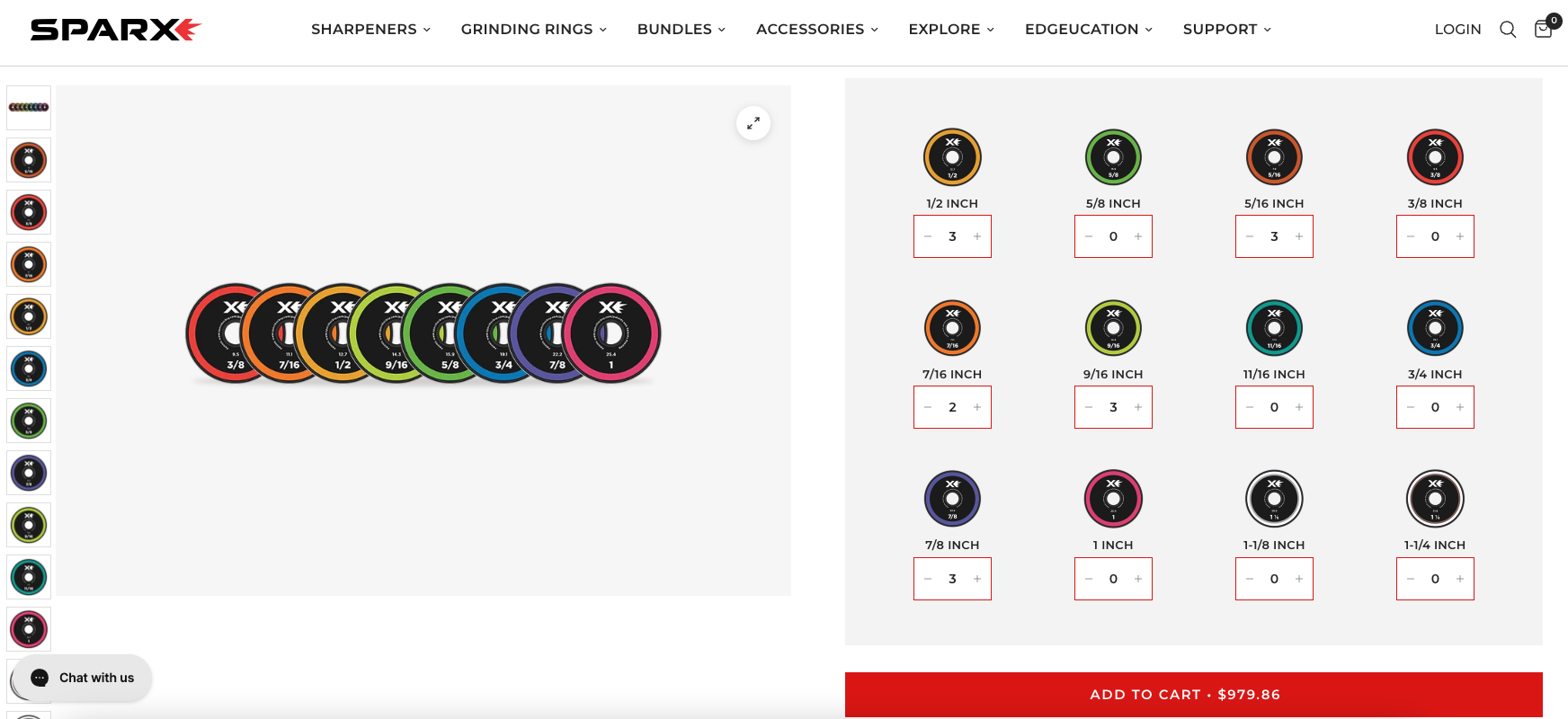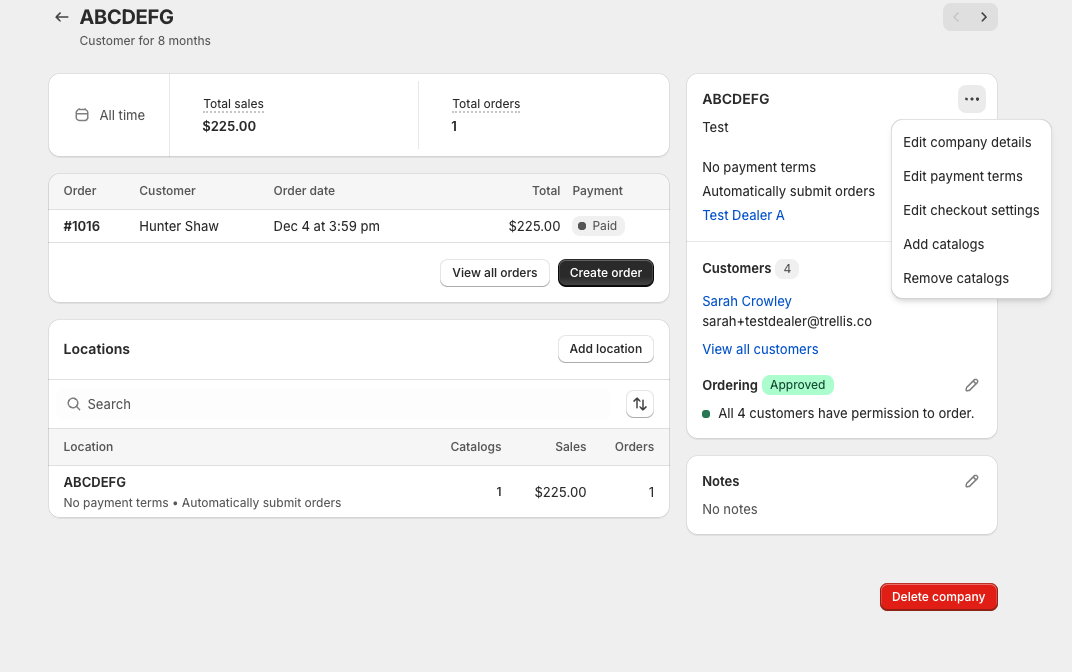The Starter Guide To Shopify B2B eCommerce Success
Isaiah Bollinger
Isaiah Bollinger
Shopify is now a more useful B2B eCommerce platform than ever before. They recently introduced B2B company accounts and are investing heavily in new B2B features launching in 2024 and 2025.
The problem is that many companies think it’s easy and cheap to get up and running with proper B2B functionality because Shopify is historically an easy platform. Shopify does make it easy, but there are still many hurdles that make B2B eCommerce hard to do regardless of platform ease of use.
Here are the main areas and pitfalls we see in B2B for newcomers to B2B eCommerce:
- Product Data
- Theming
- Company Accounts
- Internal Integrations
- Payments
- Shipping & Logistics
- Quote Requests
- External Integrations
- Sales Enablement & Marketing
Product Data
Product data is often neglected in B2B because everything has been done through email, sales reps, and non-digital channels for so long. First, you need to improve your product data to match the quality of eCommerce expectations, such as Amazon data.
If you have a large SKU count, you might need to use a third party like Datax.ai to aggregate thousands or even millions of SKUs.
Another problem often found in B2B is complex product types. Shopify has recently increased its variant limit to 2000 and can handle more complex products natively. However, there are still nuances and complexities that might involve custom development or a third-party agency like Trellis to help with certain complex product types.
Theming
Typical B2C themes might not be a good fit here. You may have a large catalog that requires more complex menu structures like a mega menu and other B2B-focused user experiences.
Areas you will likely have to consider customizing for your B2B needs outside of the normal Shopify themes:
- Menu structure UX
- Category pages
- Product pages
- Account pages
- Cart & Checkout
I would look at the top sites in your industry, even if they are not B2B-focused. Many sites with a large catalog will clue you into what needs to be done for this. You could also use the new Trade B2B shopify theme as a simple starting point.
There are many B2B-specific theming nuances you may want. An example of this would be the bulk ordering tool we did for a company, Sparx Hockey can be seen here:

Company Accounts
Having company accounts is a must for most B2B businesses. Most people don’t realize that Shopify Plus now has native B2B company accounts with price lists, sub-accounts, and other features.

Within companies, you can associate as many customers as you want so they can all order as one Company with their own individual customer logins. Each customer can have different permissions within the company, which will improve in capabilities over time.
Companies can also have specific catalogs with special pricing, unique payment options, and checkout options. This is incredibly important if you want to offer Net terms and other B2B-only options specific to each company.
Internal Integrations
The most critical integration you will likely have to do is to your ERP systems, such as Netsuite, Microsoft Dynamics, or Infor. This could be a relatively simple implementation of a prebuilt connector.
However, don’t be fooled by these easy plug-and-play options. They often don’t work for complex features such as company-specific pricing, full catalog updates, and other B2B-specific nuances.
In many cases, you may need a more serious implementation of something like Celigo or even custom features beyond what an iPaaS can offer to meet your B2B needs truly.
Payments
Shopify Payments is a great tool, but most B2B companies want to pay with net terms and essentially free credit from their B2B suppliers. You will likely want to turn on net terms and other payment methods for larger business customers using the Shopify B2B accounts and permissions capabilities. You can customize payment terms per company account.
Shipping & Logistics
Shipping and delivery of products is often the most overlooked part of eCommerce. In B2B this can be much more complex because you may need a mix of parcel, LTL, and full truckload. You may have a mix of your own trucks and third-party logistics vendors.
Typically we find that B2B companies need a platform like ShipperHQ or PDQ to add to Shopify to handle their complex logistics. This is often not a simple project piece and may take considerable upfront requirements capturing and configuration to get right.
Quote Requests
Requesting a quote is a common feature request, and some apps can help here. We even did a custom request a quote feature on a Shopify store a while back.
This is one long section saying to wait until the new quote feature comes out for companies because it is worth waiting rather than choosing a short-term solution.
External Integrations
Most people think of integrations as just internal. However, in B2B eCommerce, you will likely need many external integrations to gain more adoption. These are commonly referred to as Punchout or punchout-like integrations.
Tradecentric specializes in this, but you can work with many iPaaS companies that can help with these integrations. With larger companies, you will need to integrate with their Procurement systems, like Coupa or their ERP, so if they buy from your store, they automatically receive the data they need in their systems without having to double-enter it.
Sales Enablement & Marketing
This is probably the biggest failure of most B2B companies.
Let’s say you get through all of the above, and you have a great eCommerce platform with accurate pricing, estimated delivery dates, plenty of payment options, and all the bells and whistles. That will not guarantee adoption of your customers base.
You need to enable your team, especially your sales reps to train your customers to use the website. This usually means offering commission to sales reps for customers using the website, so they don’t feel they are losing their jobs or livelihood from the website. If the sales team is threatened or competing with the website, it will never succeed.
The other big areas of growth here can come from SEO, email, paid ads, and social media. Most distributors and manufacturers severely lack modern digital marketing skills because they historically relied on sales teams for their sales and marketing strategies.
Investing in even a subset of these can be massive. One area in which we see tremendous success is in bringing offline sales data via ERP into an email platform like Klaviyo and using that to market and bring them into the website. We can also couple this with direct mail to give new users a first-time buying promotion.
This process of enablement takes time and constant iteration. There is no silver bullet to solve this problem. I am happy to give my free advice to any distributor or manufacturer on a call to improve this process.
Conclusion
In summary, Shopify’s enhanced B2B features, like company accounts, offer great potential for eCommerce success. However, implementing a successful B2B platform on Shopify requires meticulous planning in areas such as product data, theming, and integrations, alongside managing complex B2B-specific needs like payments and logistics. Crucially, adoption hinges on effective sales enablement and digital marketing. For those ready to tackle these challenges, Shopify can significantly elevate their B2B eCommerce capabilities.
Reach out to Trellis to develop a strategy that ensures your Shopify B2B eCommerce platform is set up for lasting success.
Leave a Comment